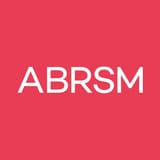Making connections: assessment and progression

John Holmes, ABRSM’s Chief Examiner, reflects on the connections between assessment and progression in music learning.
As teachers, we know that assessment is an essential part of learning and progression, guiding students from one stage to the next via clear signposts. The two distinct types of assessment – formative and summative – are very different from each other but also complementary. Both are equally valid and have important roles to play in the learning process.
Formative and Summative Assessment
Formative assessment is embedded in the day-to-day process of teaching and learning and happens over time. It includes the immediate spoken feedback that teachers give to students during lessons and often focuses on the technical aspects of learning to play or sing. This kind of assessment takes place in the context of a long-term teacher learner relationship and draws on the understanding which comes from that. It is applicable in all settings, including one-to-one and group lessons, as well as classroom teaching.
Summative assessment, on the other hand, provides a snapshot-like summary of achievement, based on one moment in time. ABRSM exams come into this category. Our examiners focus entirely on what happens in the exam room on the day, rather than on any aspects beyond the exam room, such as ‘preparation’ or ‘aspects of development and promise’. Examiners have no background information about candidates and assess only what they hear in the exam, taking into account the full range of elements involved in musical playing or singing.
What makes an effective assessment?
For any assessment to have a positive impact on progression, it needs to be the right kind of assessment. An effective assessment needs to measure the right things and using marking criteria based on the essential ingredients of music making ensures that this happens. The ABRSM marking criteria connect with the fundamental elements of musical playing and singing – pitch, time, tone, shape and performance – elements that existed long before ABRSM. As a consequence of this, you can apply our marking criteria to all instruments and singing, and across all grades; they have a universal marking criteria.
An effective assessment also needs to measure accurately. Our marking criteria clearly show the difference between the various attainment levels. This makes it straightforward for teachers to assess their students, and for students to assess themselves. It also ensures that examiners are consistent in their marking.
Finally, assessment needs to be meaningful if it’s going to motivate learners. It needs to show insight and give a signpost towards the next stage of learning. So our criteria encourages examiners to think across the full range of musical elements involved and indicate what went well and what went not so well. Music exists in real time, so any valid assessment has to weigh up strengths and weaknesses simultaneously, as the music goes along. This is very much the ABRSM model of assessment. Examiners mark up or down from the pass mark, balancing the strengths and weaknesses they hear during the exam, in order to arrive at the mark.
Becoming an independent learner
It’s tempting to see the role of progression as something linear, like the grades: 1, then 2, then 3. However, a more significant measure of progress is perhaps the journey from dependence to independence; from students relying on their teacher to have responsibility for their learning, to students taking on that responsibility themselves. Real progression is about acquiring the knowledge, skills and understanding needed to keep progression going independently and to do this, students need to become ‘independent learners’.
An essential part of becoming an independent learner is being able to self-assess: to recognise which aspects of your playing or singing could be better and to have the tools needed to improve them.
ABRSM’s marking criteria for graded exams are designed to help with this. They provide an assessment ‘guide’ that can be used by anyone, not just examiners, but candidates, teachers and everyone else involved in the exam process. They make it easy to identify and assess the quality of the various elements involved in musical playing or singing and the degree of a student’s control over those elements.
A virtuous circle
There’s a virtuous circle linking progression and assessment, via attainment and motivation. First comes progression – a learner gets better at something to the point where there’s a sense of attainment. This attainment is recognised and formalised through an effective summative assessment, which in turn goes on to provide motivation, inspiration and guidance for the next stage of learning and progression. And so, the circle continues.
This relationship between assessment and progression is an extremely valuable one. At ABRSM our aim is for our exams (and the marking criteria they are based on) to sustain, encourage, support and inspire musical learning and progression more effectively than ever before.
This article was first published in ABRSM’s Libretto magazine in 2014 and is reproduced with permission from ABRSM: www.abrsm.org





